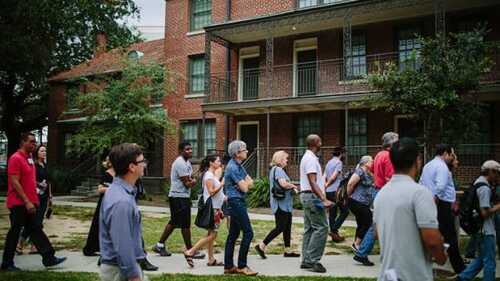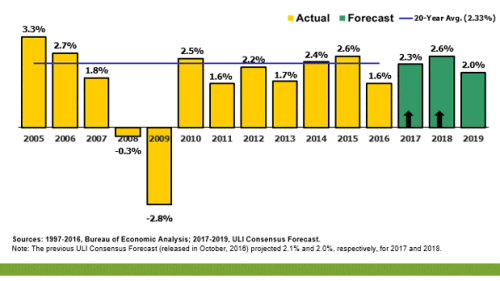Mixed Use and Multi-Use
More investors are warming up to the notion that mixed-income development can also be a relatively low-risk venture that offers a stable rate of return.
Parking is a big issue in the Dallas/Fort Worth region, an area that 3.4 million more people are expected to call home between now and 2040, raising the total population to 10.6 million while adding 2.3 million more cars to clogged roadways. At an event in Dallas, land-use experts considered several solutions for a flexible future.
With portable electronic devices allowing people to work from anywhere and at any time, the lines dividing office, hospitality, and home design are blurring.
JLL’s latest report analyzes markets with a high concentration of in-demand, affordable tech talent and available real estate, much of which is located near research universities that can be tapped for new employees.
Built in 1949, the Cameron Village shopping center of Raleigh, North Carolina, was one of the first in the Southeast. Decades later, Cameron Village is still thriving, with several new mixed-use developments adding increased density and energy.
Eric Blumenfeld, a prominent homegrown Philadelphia developer, more than a decade ago began rehabbing buildings in the city’s North Broad Street corridor and inviting big-name restaurateurs to use the space. Now, with the reopening of the long-vacant Divine Lorraine as apartment/restaurant space, a beloved architectural icon, Blumenfeld, owner of EB Realty Management, believes his vision is finally coming together.
The latest survey of U.S. real estate economists showed a marked increase in expected economic measures, most likely due to federal proposals to reform the tax code, reduce regulatory burdens, and invest in infrastructure. Compared with the same survey from six months ago, real estate economists have higher expectations about gross domestic product (GDP) growth, employment growth, and housing starts.
A Denver developer activates an alley to tie together a hotel, offices, food, and “maker” retail on the site of a former dairy.
Compact, well-connected urban development can create vibrant cities that are more competitive, inclusive, and resilient and that have lower carbon footprints.
Aging shopping malls—many burdened with high vacancy rates or even abandoned—are being transformed into vibrant, mixed-use destinations that are connected to their surrounding communities. At the 2016 ULI Fall Meeting, “the mall of the future” was explored by a panel of design, development, and placemaking experts.









